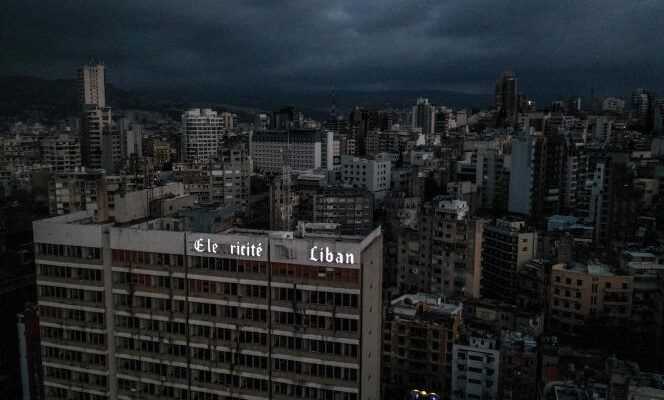LETTER FROM BEIRUT
About ten rows of solar panels are lined up on the roof of the girls’ school for charity, in the Achrafieh district, in Beirut. Soon to be operational, the device should generate 80 kWp (“kilowatt peak”) for this school which welcomes 1,100 pupils from primary to 12th grade. “Every month, I have to find six tonnes of fuel oil, it costs an average of 60 million pounds [3 000 dollars au prix de la livre libanaise sur le marché noir]. With solar, we will save 10,000 to 20,000 liters of fuel oil per year. We can pass these savings on to school fees and help more families ”, estimates the director, Sister Nada Abou Fadel, who had to fight to organize the start of the school year in mid-October.
The public electricity network of Electricité du Liban (EDL) now supplies, at best, only a few hours of electricity per day. In Beirut as in the rest of the country, individuals and businesses have become totally dependent on generators, supplied with fuel oil. But after a summer marked by shortages, it is now the gradual lifting of subsidies on energy products that makes fuel unaffordable for most Lebanese, whose purchasing power collapsed with the devaluation of the pound and hyperinflation. Many homes and businesses have to deal without electricity for a good part of the day. Solar is an option that many are now considering as a back-up solution to generators, provided they have foreign currency to afford these installations, all of whose components are imported.
“It’s a big investment. It costs an average of $ 1,000 per kWp but, with the increase in the price of fuel oil, it now pays for itself in one to two years, compared to three to seven years previously, and it reduces Lebanon’s carbon footprint, which depends on totally fossil fuels ”, explains Clément Couëtil, a volunteer with the French NGO Electriciens sans frontières (ESF), which has piloted the installation of solar panels in six schools in Beirut, including the school for girls of charity. With the help of NGOs such as ESF and United Nations agencies, many institutions, including schools and hospitals, are acquiring photovoltaic systems.
“There are plenty of problems”
Since the summer, demand has also exploded on the domestic market. “We have been overwhelmed since June! With the shortages and the lifting of fuel oil subsidies, the problem for people is no longer just to save money, but to generate electricity. A huge domestic market has been created for installations of 3 to 5 kWp, and there is an explosion of companies that have put themselves on the market ”, confirms Jean-Paul Sfeir, CEO of Solarnet, an SME that has been working in solar since 2009 and photovoltaics since 2019. Its order book is already full for a year with projects led by NGOs and the United Nations. The company is trying to catch up on the domestic market, where households want to equip themselves at low prices. “A European system costs around $ 7,000, compared to $ 4,000 for a Chinese. We have to line up, we have ordered Chinese and Taiwanese products, but we won’t have them before January [2022] “, continues the entrepreneur.
You have 43.95% of this article left to read. The rest is for subscribers only.
